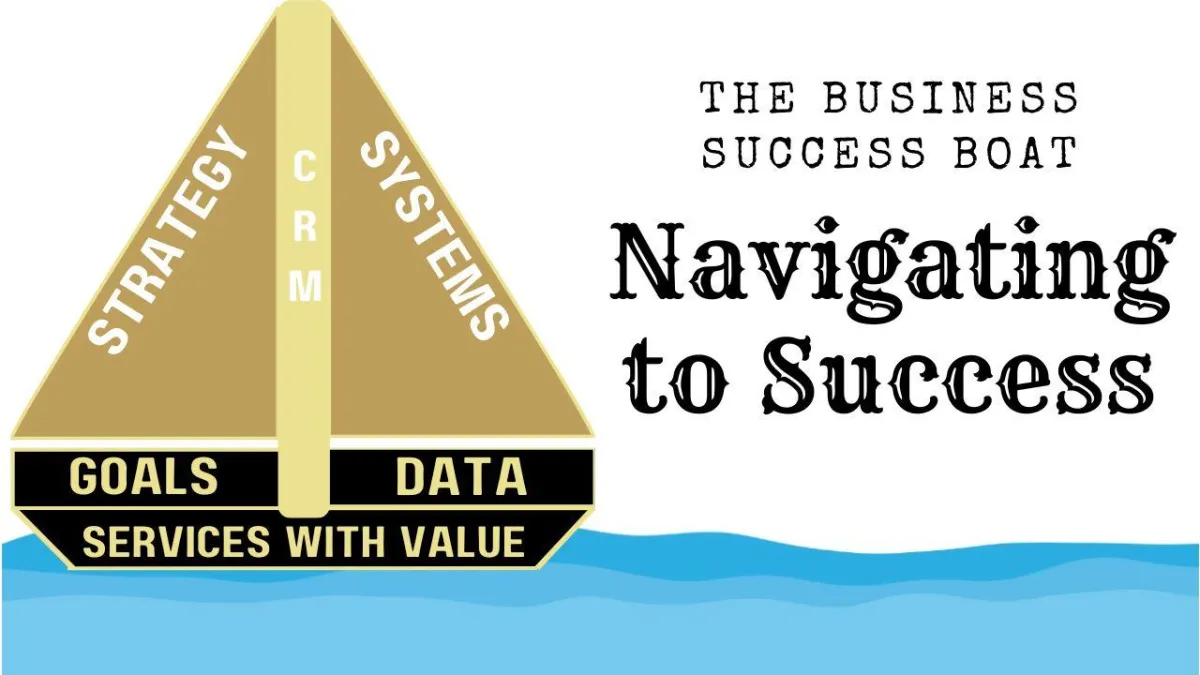GTR Blog

The Six Elements to Build a Strong Business
I like to compare a business to a boat. When you build a boat you want it to safely transport you to your destination, withstanding potential turbulent waters. Similarly, your business needs to adapt and progress through the marketplace. With this in mind, I crafted a Business Success Boat that’s made of six areas: Services with Value, Goal, Data, Customer Relationship Management, Strategy, and Systems.

The Foundation of Your Business: Delivering Valuable Services
It all starts with providing services with value. If you blend in with the competition, you'll have difficulties attracting clients. It's important to consider the client's journey. Can you offer a comprehensive experience made of multiple services that complement each other while enhancing client satisfaction and delivering added value?
The Importance of Goal Setting
Evaluating your current position and envisioning your desired destination is paramount. Instead of fixating solely on short-term objectives, try to set goals over an extended period, such as three years.
Reverse engineering proves to be a valuable tool in this process. Begin with your three-year vision and work backward, defining your one-year milestones, and then further breaking them down into monthly and quarterly targets. This method fosters the creation of a well-structured plan.
Your Business's North Star: The Importance of Data
Whether you acknowledge it or not, data leaves a lasting impression. Neglecting data can lead to impulsive decisions, reactive responses to client demands, or imitation of competitors without a clear direction. It's like sailing without a compass, without an idea of where you’re heading.
While small business owners rightly focus on client acquisition and retention, the underlying data, encompassing lead tracking and client behavior, often holds powerful insights. Aligning data with your goals allows for course adjustments. Sometimes, this entails refining your goals based on insights derived from the data.
The Mast of Your Vessel: Customer Relationship Management (CRM)
A robust CRM system, symbolized by the mast, directly influences your business's growth potential. The more capable your CRM, the more substantial your sales and market presence. Even if your CRM initially possesses limited data, it can expand over time, enabling the development of strategies and systems.
Completing the Construction of the Boat: Strategy and Systems
Think of strategy as your navigation map, guiding you toward your destination. Systems are sets of processes that consistently yield the same outcome.
The CRM connected to your business strategy is strategic, as it plays a pivotal role in elevating your business. A robust CRM allows your strategies and systems to draw strength from it, forging a symbiotic relationship that propels your business forward.
As your business ascends to new heights, your vessel evolves. You may need to adjust and expand your strategies and systems. Your goals also evolve to align with your current level of growth. Each shift in level necessitates modifications to your vessel, some subtle and internal, while others are more visible.
Putting it all together
It is important to build a strong business boat to navigate to success. These six elements should work together to improve your business. This will allow your business to navigate the waters of the marketplace successfully and withstand challenges.
